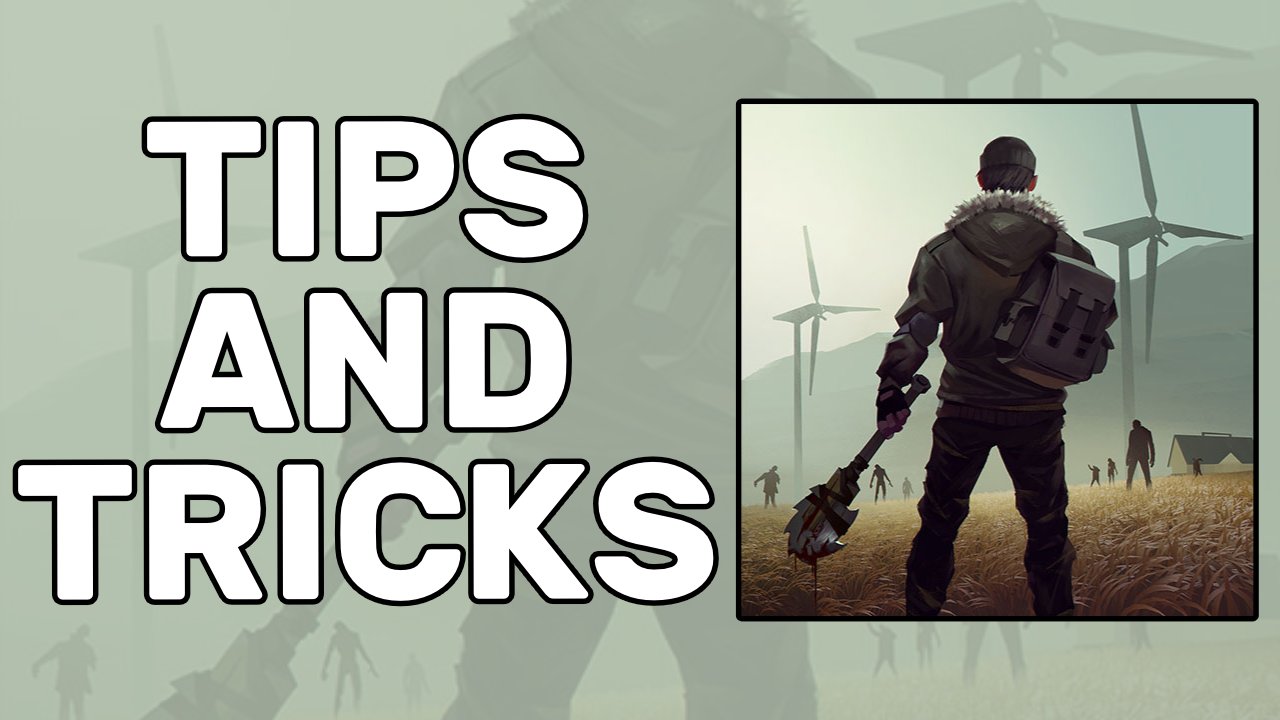Navigating the Apocalypse: Tips and Tricks for Last Day on Earth: Survival
Hey fellow survivors! We hope you’re holding up well in the chaotic, unpredictable realm of Last Day on Earth: Survival. In this game, each day is a battle, a struggle for survival against the relentless zombie horde and other desperate survivors. It’s a wild, dangerous world out there, and we all need every bit of help we can get to navigate through the treacherous landscapes and come out alive.
That’s why today, we’re here to arm you with some crucial knowledge, tips, and tricks that will aid us all in staying alive, building a fortress, and maybe even thriving in this post-apocalyptic nightmare. Whether you’re a seasoned player or just starting, there’s something here for everyone.
So, gather round, fellow apocalypse navigators, as we delve into the nitty-gritty of surviving and conquering in Last Day on Earth: Survival! Let’s bolster our defenses, sharpen our weapons, and dive right into the action with confidence and a game plan!
1. Start Strong
When we first step into the perilous world of Last Day on Earth: Survival, it’s crucial to hit the ground running. The initial moments in the game can significantly influence our long-term survival prospects, so we need to start strong and smart.
Firstly, let’s focus on building a robust shelter. Think of this as our safe haven, the place where we’ll regroup, plan, and store all the valuable resources we find. A well-constructed home base is essential for our survival journey. We should gather pine logs and limestone, which are fundamental building materials, as quickly as possible. These resources are readily available and provide the basic structure for our shelter.
But we shouldn’t stop there. Upgrading our shelter is equally important. An upgraded shelter offers better protection against the undead and other players looking to loot our hard-earned resources. So, once we have our basic structure, let’s not hesitate to reinforce it. Strengthen the walls, secure the doors, and maybe even add a few traps here and there for extra security.
Remember, our shelter is more than just a place to sleep. It’s the headquarters of our survival operations, the place where we’ll craft, cook, and plan our next moves. Therefore, it should be functional and secure. Let’s organize the space efficiently, creating areas for storage, crafting, and rest. This way, we can quickly locate our resources and items, making our day-to-day survival more manageable.
In the end, a strong start is all about preparation and establishing a secure, functional base of operations. With a solid shelter in place, we’re ready to face the challenges and dangers that await us in the Last Day on Earth: Survival. Let’s build wisely and steadily, fortifying our home base to create a sanctuary in the midst of apocalypse chaos. With a strong foundation, we set the stage for a successful survival adventure!
2. Resource Management
Resource management is the lifeblood of our survival strategy in Last Day on Earth: Survival. In a desolate world where every drop of water and piece of food counts, we need to be meticulous and strategic about how we gather, use, and conserve resources.
First off, water and food are non-negotiables. Without them, our survival adventure is short-lived. We need to ensure a steady supply of both to keep our energy levels up and health in check. Scavenge for water bottles and hunt or gather food whenever possible. It’s also wise to keep an eye out for seeds and start a small garden at our base, providing a renewable source of food.
But resources aren’t just about sustenance; they’re also about sustainability. We should always be on the lookout for materials that can be used to craft weapons, armor, and tools. Wood, stone, iron, and other metals are crucial for crafting and building. We need to familiarize ourselves with the different resource types and their uses to efficiently collect and utilize them.
Having a backpack is non-negotiable. The more space we have, the more loot we can carry back to our base. Initially, we might have a small backpack, but we should prioritize upgrading it as soon as possible. An upgraded backpack allows us to carry more items, making each scavenging trip more productive and worthwhile.
We also need to be mindful of our inventory space. It’s easy to get carried away and pick up everything we come across. However, not all items are immediately useful or necessary. Let’s learn to identify and prioritize essential resources and leave behind what we don’t need. This way, we avoid cluttering our inventory with non-essentials, saving space for valuable finds.
Lastly, let’s not forget about the importance of saving for the future. While it might be tempting to use all our resources as soon as we get them, it’s wise to keep a stash for emergencies. Having a reserve of water, food, and crafting materials can be a lifesaver when times get tough.
In summary, effective resource management is about balancing our immediate needs with future necessities. By being smart and strategic about how we gather, use, and conserve resources, we set ourselves up for long-term survival success in Last Day on Earth: Survival. Let’s stay vigilant, plan ahead, and use our resources wisely to navigate through the apocalypse!
3. Craft Wisely
Crafting is our ticket to survival in the harsh environment of Last Day on Earth: Survival. With the right approach to crafting, we can equip ourselves with the tools, weapons, and defenses necessary to fend off threats and enhance our living conditions.
First and foremost, weapons and armor should be our top crafting priorities. In a world swarming with zombies and potential hostile survivors, we need to defend ourselves. Crafting a reliable set of weapons and armor enhances our combat capabilities, allowing us to take on enemies with confidence. Whether it’s a simple wooden spear or a more advanced firearm, having a weapon at hand is crucial.
But crafting isn’t just about making weapons. We also need to think about the tools that facilitate our survival. Crafting items like pickaxes, hatchets, and other resource-gathering tools is essential. These tools enable us to collect resources more efficiently, speeding up our building and upgrading processes. With the right tools, we can gather more and better-quality materials, which are fundamental for our survival journey.
Workbenches are another crafting essential. These stations allow us to craft more advanced items and process raw materials. For example, a woodworking bench lets us turn logs into planks, a necessary step for building stronger structures and crafting more sophisticated items. Investing in various workbenches expands our crafting possibilities, opening doors to new technologies and items that can significantly improve our survival chances.
Crafting also requires knowledge and planning. We need to familiarize ourselves with the game’s crafting recipes and understand the resources required for each item. Knowing what we can craft and the materials needed helps us plan our scavenging trips better, ensuring we collect what we need for our crafting goals.
Lastly, let’s not forget to continuously upgrade our crafting skills and stations. As we progress in the game, new crafting options become available. Staying updated on the latest crafting technologies and investing in upgrades allows us to craft better items, which are crucial for surviving in the more challenging areas of the game.
In essence, crafting wisely is about being strategic and proactive. By focusing on essential items, planning our crafting process, and investing in upgrades, we can build a strong arsenal of tools and weapons that will serve us well in the treacherous landscapes of Last Day on Earth: Survival. Let’s craft with purpose and strategy to ensure we’re always prepared for the challenges ahead!
4. Explore with Caution
Exploration is vital in Last Day on Earth: Survival, opening up new opportunities and resources crucial for our progress. However, the world out there is dangerous, and we need to approach it with caution and strategy to avoid unnecessary risks and losses.
Firstly, understanding the zone colors is crucial. The game’s map is divided into different zones, each represented by a color indicating its level of danger. Green zones are relatively safe, with fewer enemies and manageable threats. These areas are great for beginners, offering a safer environment for gathering resources and gaining experience.
Yellow zones present a moderate challenge, with a higher number of enemies and potential for PvP encounters. We should venture into these areas once we feel comfortable with the game mechanics and have decent gear to defend ourselves. These zones offer better loot, making the risk worthwhile if we’re prepared.
Red zones, on the other hand, are high-risk areas with powerful enemies and a high likelihood of running into other players who might not be friendly. We should only explore these zones when we’re well-equipped and experienced in the game. The loot in red zones is tempting, but the danger is real, so we need to weigh the risks and rewards carefully.
When exploring, always be aware of our surroundings. Pay attention to the sounds and movements in the environment, as these can signal the approach of enemies. Stealth is a valuable tactic, allowing us to avoid unnecessary fights and approach enemies strategically. Use the sneak function to move quietly and get the jump on zombies or unsuspecting players.
Planning our trips is also essential. Before heading out, let’s make sure we have enough inventory space for loot and bring along sufficient supplies for healing and combat. Knowing the layout of the zone and having a clear objective for our trip can also help make our exploration more efficient and safe.
Lastly, let’s not forget to mark safe and dangerous areas on our map. Having a mental map of resource-rich spots and areas to avoid can guide our future exploration efforts, making each trip more productive and secure.
In conclusion, exploration is a double-edged sword in Last Day on Earth: Survival. While it’s necessary for progress, it also comes with risks. Approaching exploration with caution, preparation, and a good understanding of the game’s mechanics can help us navigate through the dangerous world successfully, reaping the rewards while minimizing the dangers. Let’s explore smartly and stay safe out there!
5. Join a Clan
In the desolate and dangerous landscapes of Last Day on Earth: Survival, there’s undeniable strength in numbers. Joining a clan isn’t just about socializing; it’s a strategic move that offers a host of benefits to help us navigate through the treacherous post-apocalyptic world.
Firstly, being part of a clan provides us with a sense of community and support. The game can be challenging and at times, downright brutal. Having clan members to share tips, strategies, and resources with can significantly ease our survival journey. We can learn from experienced players, get advice on tackling tough zones, and have a group of allies ready to back us up when needed.
Raids are another area where having a clan becomes invaluable. With a group of coordinated players, we can participate in and defend against raids more effectively. Clan raids allow us to pool our strengths to attack NPC bases or even those of other players, securing valuable resources and items in the process. When it comes to defending our base, having clan members assist in fortification and defense can be the difference between keeping or losing our hard-earned loot.
Resource sharing within a clan is also a significant advantage. We can exchange items and resources with our clanmates, helping each other out in times of need. This collaborative approach allows us to access resources we might be lacking, making our crafting and building endeavors more efficient and successful.
Joining a clan also opens up access to clan-specific events and challenges, offering unique rewards and opportunities for collaboration. Engaging in these events not only strengthens our character but also fosters a sense of camaraderie and teamwork within the clan, making the game more enjoyable and rewarding.
However, let’s be mindful of the clan we choose to join. It’s important to find a group of players whose goals and playstyle align with ours. Whether we’re casual players looking for a relaxed and supportive group or competitive survivors seeking a clan that actively engages in raids and PvP, finding the right fit is crucial for a positive and fruitful clan experience.
In essence, joining a clan in Last Day on Earth: Survival is about more than just teaming up with other players. It’s about building a community of survivors working together to navigate through the challenges and dangers of the game. With the right clan, we can not only survive but thrive in the unforgiving world of Last Day on Earth. Let’s find our tribe and face the apocalypse together!
Conclusion
Surviving the apocalypse is no easy feat, but with these handy tips and tricks, we’ll be well on our way to establishing a stronghold in Last Day on Earth: Survival. The game is a thrilling challenge, filled with unexpected twists and turns, and each day brings a new adventure. But remember, knowledge is power, and being prepared can make the difference between life and death in this perilous environment.
For those of us looking to dive deeper into the game’s mechanics and strategies, there are some fantastic resources available online to guide us through our survival journey. The Last Day on Earth: Survival Wiki offers a comprehensive Survival Guide, providing detailed insights and tips on navigating the game’s challenges. Whether we’re beginners or seasoned players, this guide is a valuable resource for enhancing our gameplay and survival skills.
For newcomers to the game, the Beginner’s Guide on the game’s official Wiki is a must-read. It covers the basics of Last Day on Earth: Survival, offering step-by-step guidance on building our first shelter, interacting with in-game characters, managing energy, and much more. This guide is a fantastic starting point for anyone looking to get acquainted with the game’s fundamental mechanics and strategies.
For a different perspective, check out GameSkinny’s Last Day on Earth: Survival Guide. This guide offers practical tips and strategies for surviving in the post-apocalyptic world, helping us understand the importance of the Threes of Survival: Three weeks without food and three days without water. With these guides at our disposal, we’re better equipped to face the challenges that lie ahead in the game.
So, let’s gear up, team up, and face the end of the world head-on. Together, armed with knowledge and a strong strategy, we’ve got this! Happy surviving!






